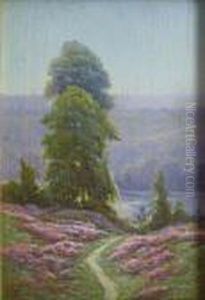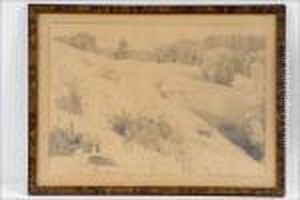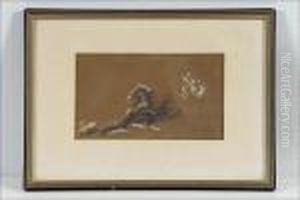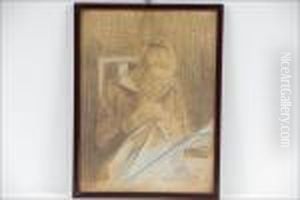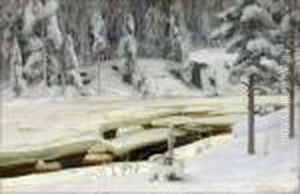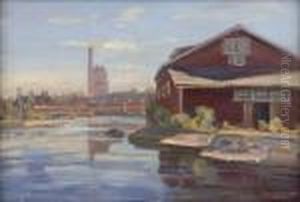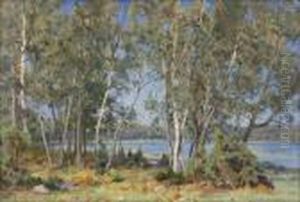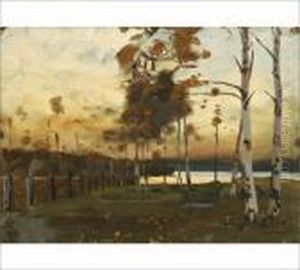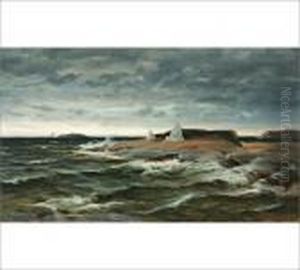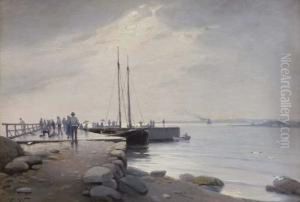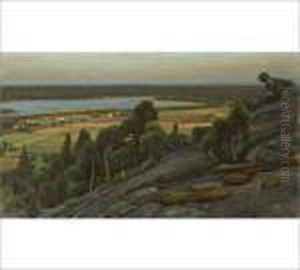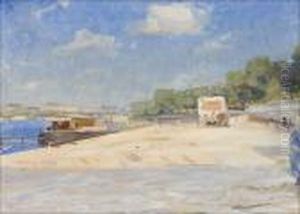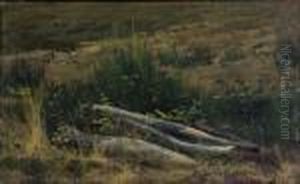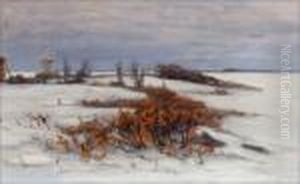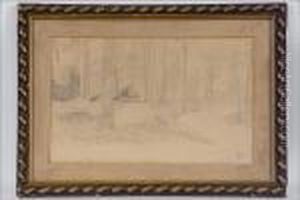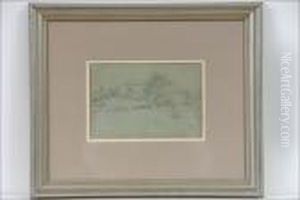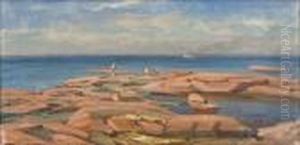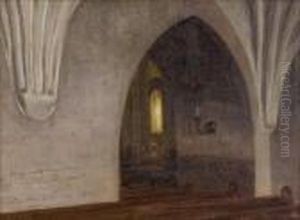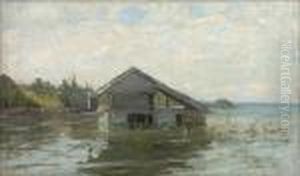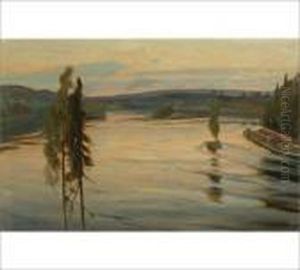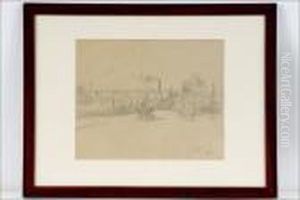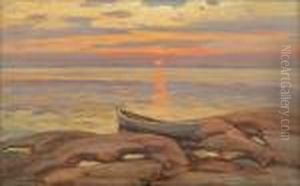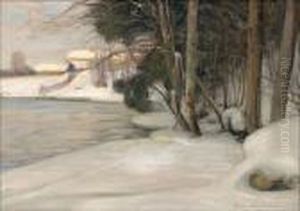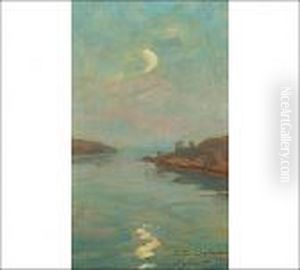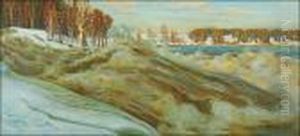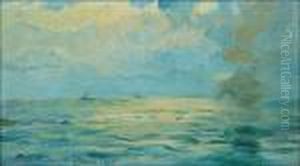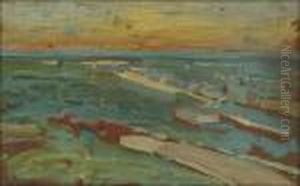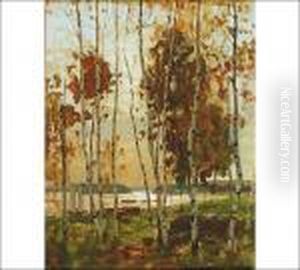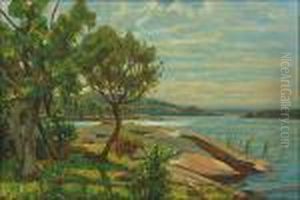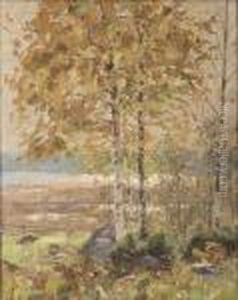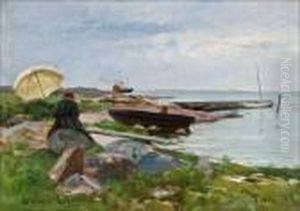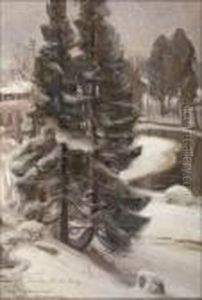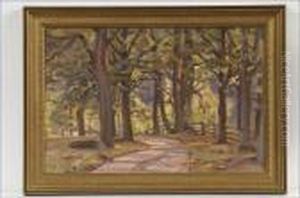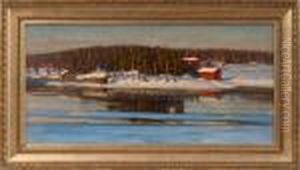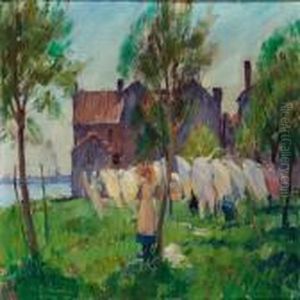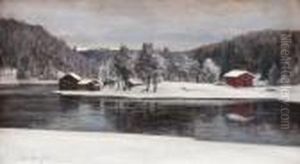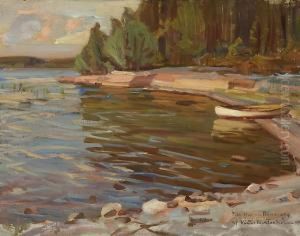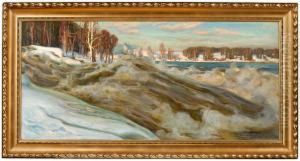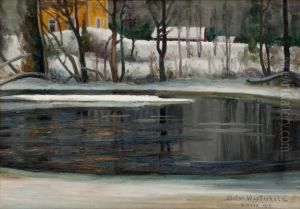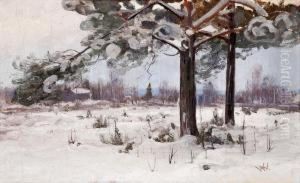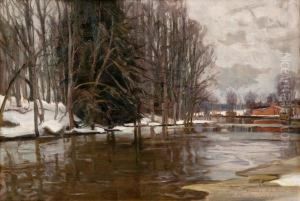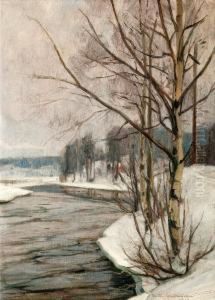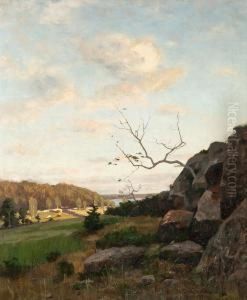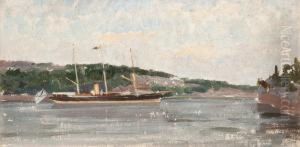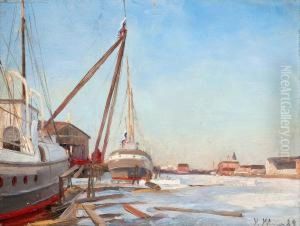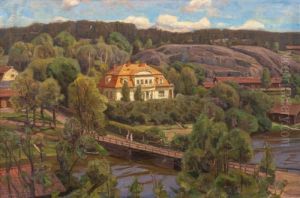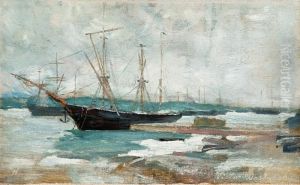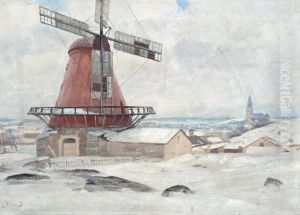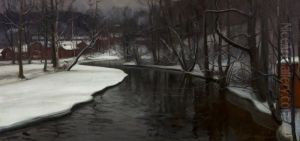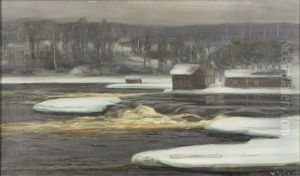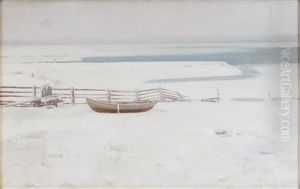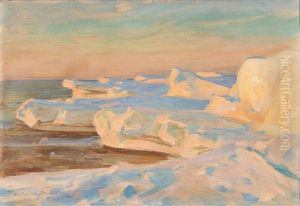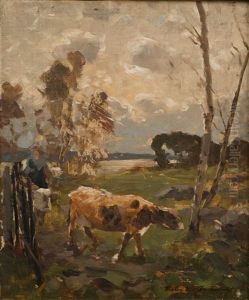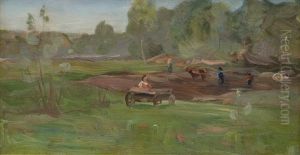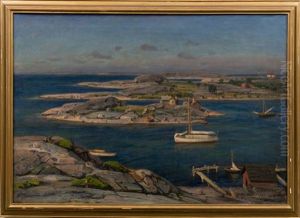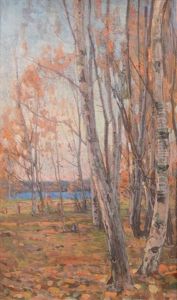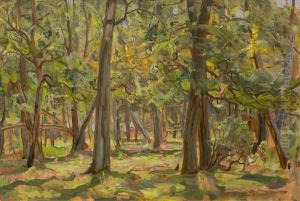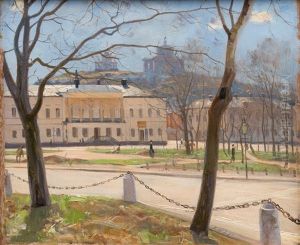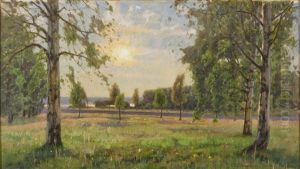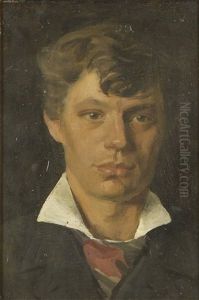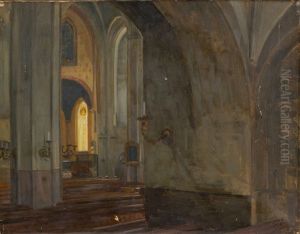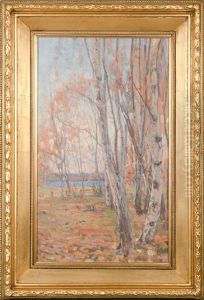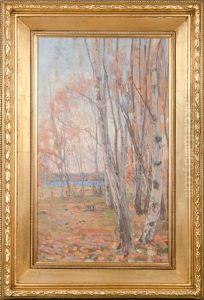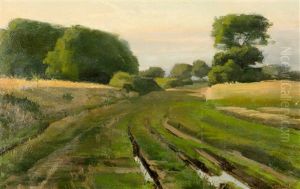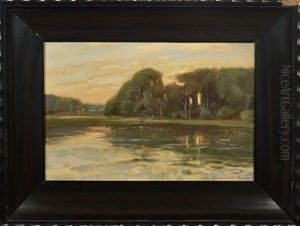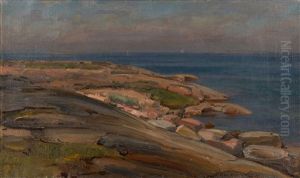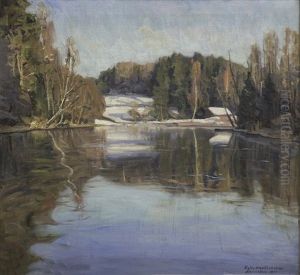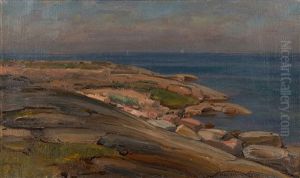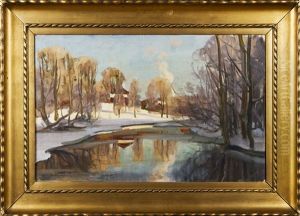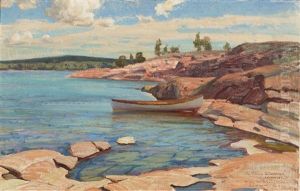Victor Westerholm Paintings
Victor Axel Westerholm was a prominent Finnish painter, born on January 4, 1860, in Turku, Finland. He is best known for his naturalistic landscape paintings and as a central figure in the development of Finnish plein air painting. Westerholm studied at the Drawing School of Turku from 1874 to 1879, and later at the Academy of Fine Arts, Stockholm, from 1880 to 1881. He furthered his studies in Düsseldorf, Germany, and in Paris, France, where he was influenced by contemporary plein air and naturalist movements.
Westerholm's early works were typically Finnish landscapes painted with a naturalistic touch, but his style evolved to embrace the plein air technique, capturing the effects of natural light and atmosphere. He was particularly fond of the archipelago scenery around the island of Örö, where he painted many of his most significant works.
Apart from his artistic endeavors, Victor Westerholm played a crucial role in the Finnish art scene as a teacher and influencer. In 1889, Westerholm became the head of the Drawing School of Turku, a position he held until his death. He was instrumental in organizing the Önningeby Colony, an artists' community in Åland, which became a vibrant center of Finnish art during the summer months and attracted many artists from Finland and abroad.
The Önningeby Colony was a testament to Westerholm's commitment to plein air painting and his influence on Finnish art. Artists gathered there to capture the unique light and landscape of the archipelago, sharing techniques and ideas, and fostering a creative exchange that contributed significantly to the development of Finnish national art during a period of heightened national identity.
Victor Westerholm's contribution to Finnish art was recognized in his time, and he received several accolades and honors. His works were exhibited widely in Finland and internationally, and they continue to be held in high regard, with many displayed in Finnish museums, including the Ateneum Art Museum in Helsinki.
Westerholm's life was dedicated to capturing the serene beauty of the Finnish landscape and nurturing the artistic talents of others. He passed away on November 19, 1919, leaving behind a legacy as a founder of the plein air tradition in Finnish art and as a mentor to a generation of Finnish artists.
